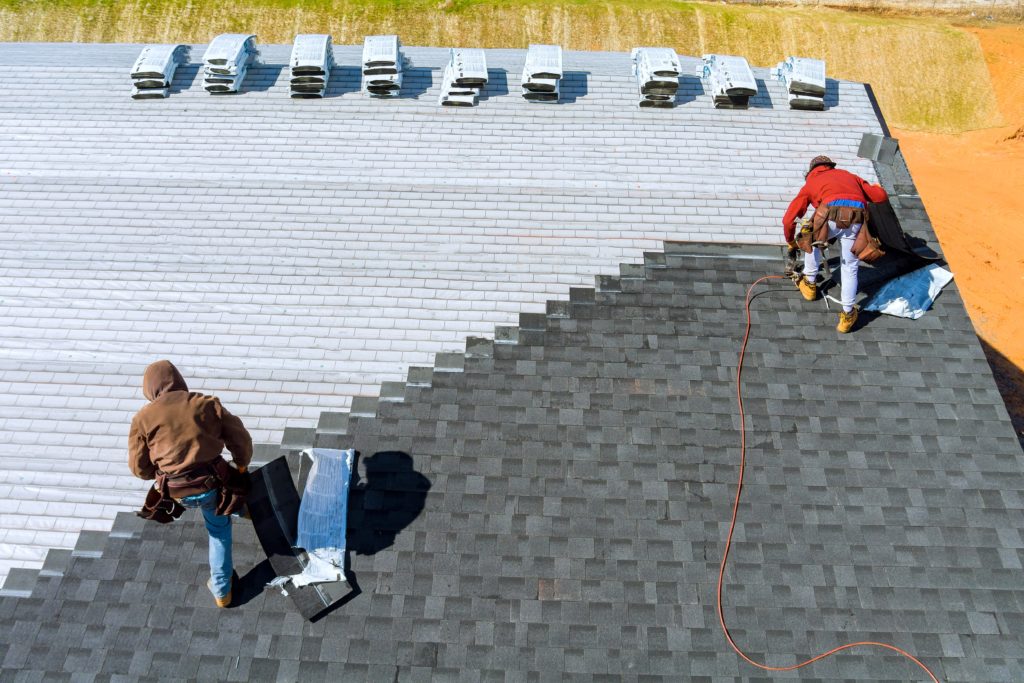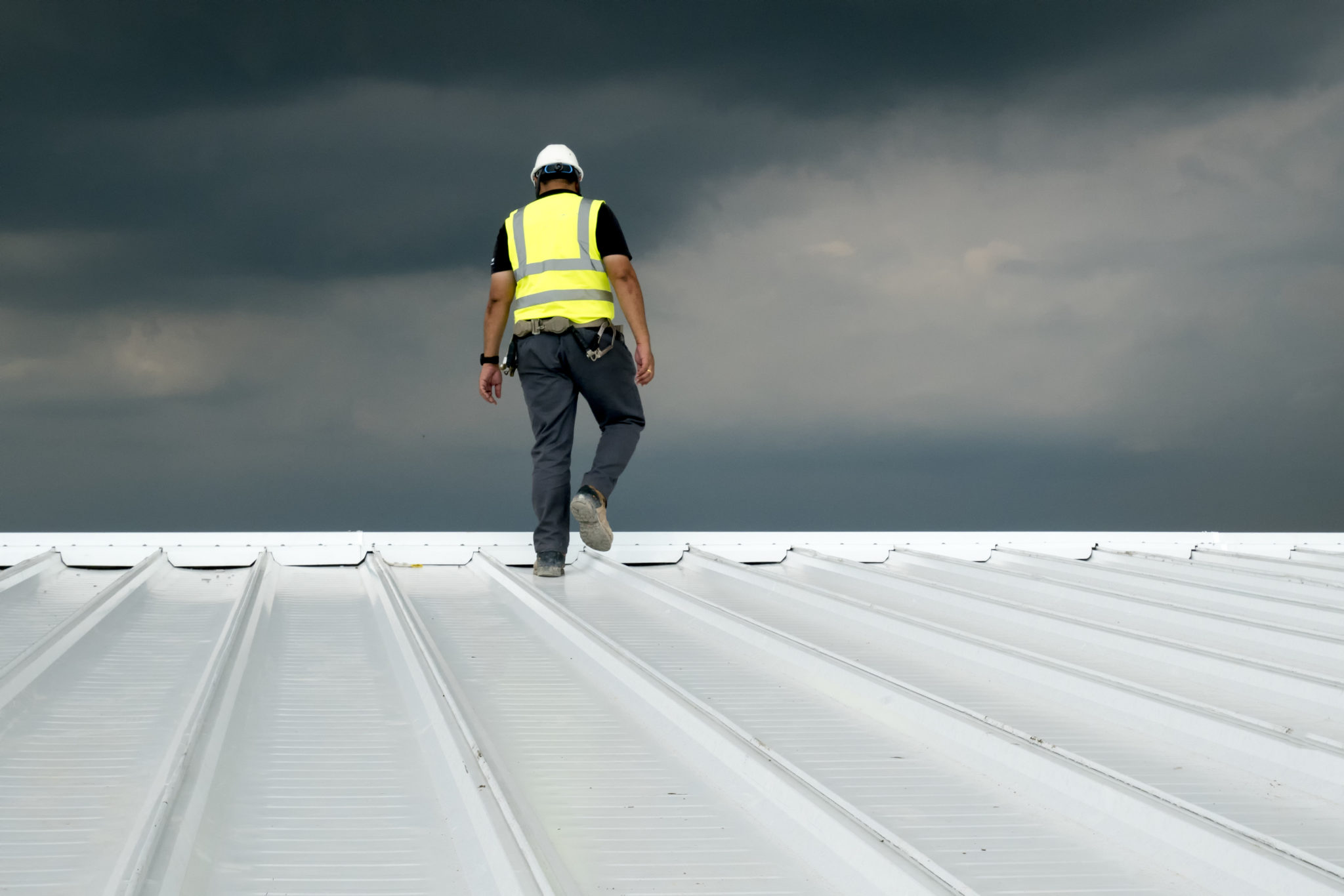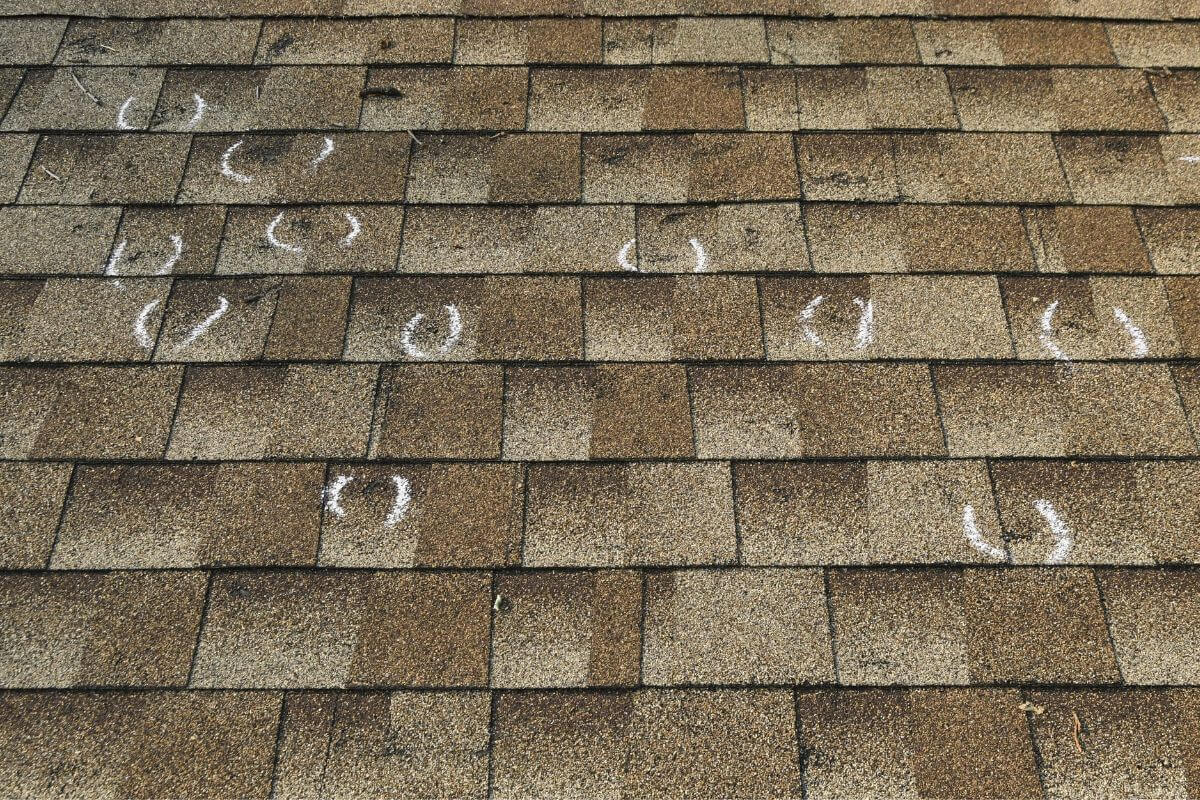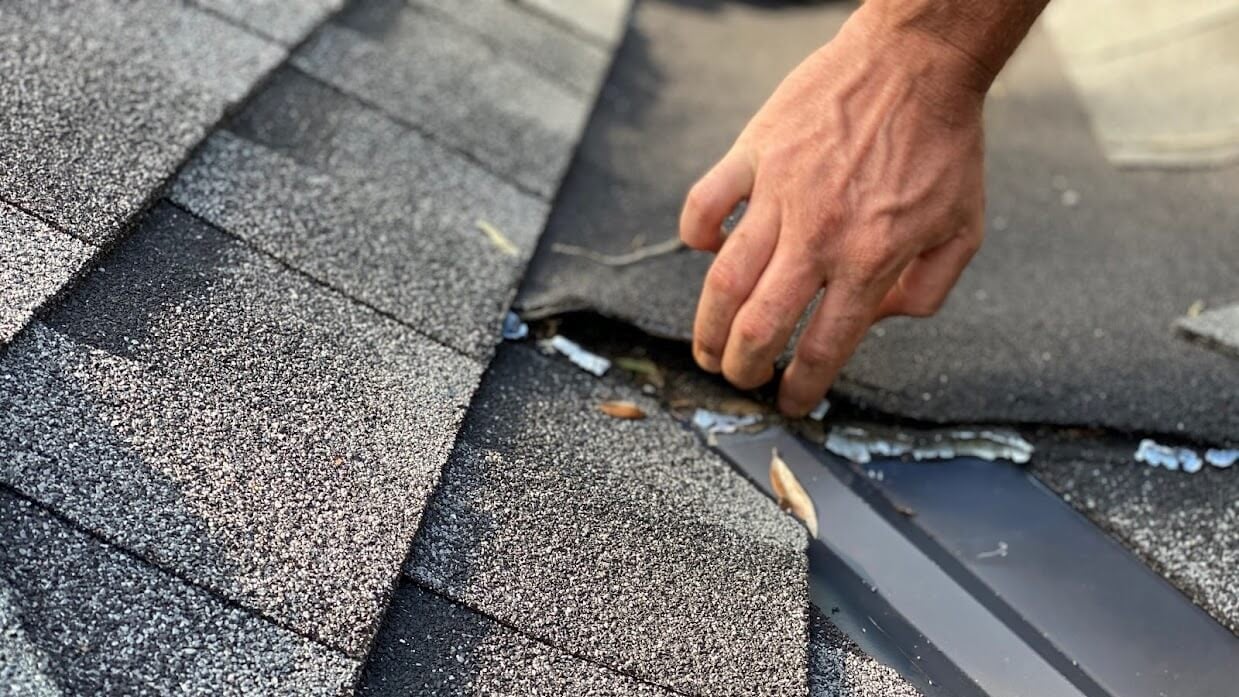Tips and Advice
Yes, you should get your roof inspected after a hail storm. In fact, the question many homeowners ask is, “Should I get my roof inspected after hail storm?” Hail damage isn’t always visible but can cause serious issues over time. Inspections can spot hidden damage early, helping prevent costly repairs. This article covers why inspections are essential, signs of hail damage, DIY inspection tips, and when to call a professional.
Key Takeaways
- Roof inspections after hail storms are essential to detect both visible and hidden damage, preventing costly repairs and structural issues.
- Hiring a professional roofing contractor is crucial for a comprehensive assessment, facilitating the insurance claims process and ensuring effective repair.
- Homeowners should conduct preliminary DIY inspections for obvious damage, while regular maintenance and upgrading to impact-resistant materials can significantly reduce future hail damage risks.
The Importance of Roof Inspections After a Hail Storm
Roof inspections after a hail storm are crucial for maintaining the safety and longevity of your roofing structure. Hail damage can be unpredictable, and it may not always be apparent immediately after the storm. The severity of the damage can vary, affecting both visible aspects like shingles and hidden issues such as leaks. Neglecting roof inspections may cause further deterioration, leading to costly repairs and significant structural issues.
Identifying storm damage is vital as hail damage can appear in various forms, from cracked or missing shingles to dents in metal roofing. These damages, if left unchecked, can worsen over time, leading to water infiltration and more severe damage. A comprehensive roof inspection helps detect these issues early, allowing for prompt resolution before they escalate.
A professional roof inspection offers a detailed damage assessment, which is critical for insurance claims. Insurance companies often require a professional evaluation before approving claims related to hail damage. Therefore, having your roof inspected by a qualified roofing contractor not only helps in maintaining the roof’s integrity but also facilitates the insurance claim process.
Common Signs of Hail Damage on Your Roof
After a hail storm, it is essential to inspect your roof for any signs of damage caused by hailstorms. Hail damage can present itself in both visible and hidden forms, and recognizing these signs is the first step in protecting your roof from further harm. Visible signs of damage are usually easier to spot, but hidden indicators can be just as destructive if left unchecked.
In the following subsections, we will delve into the details of visible signs of damage and hidden damage indicators. Understanding these signs will help you decide whether you need a professional roof inspection or if you can address the issues through DIY measures.
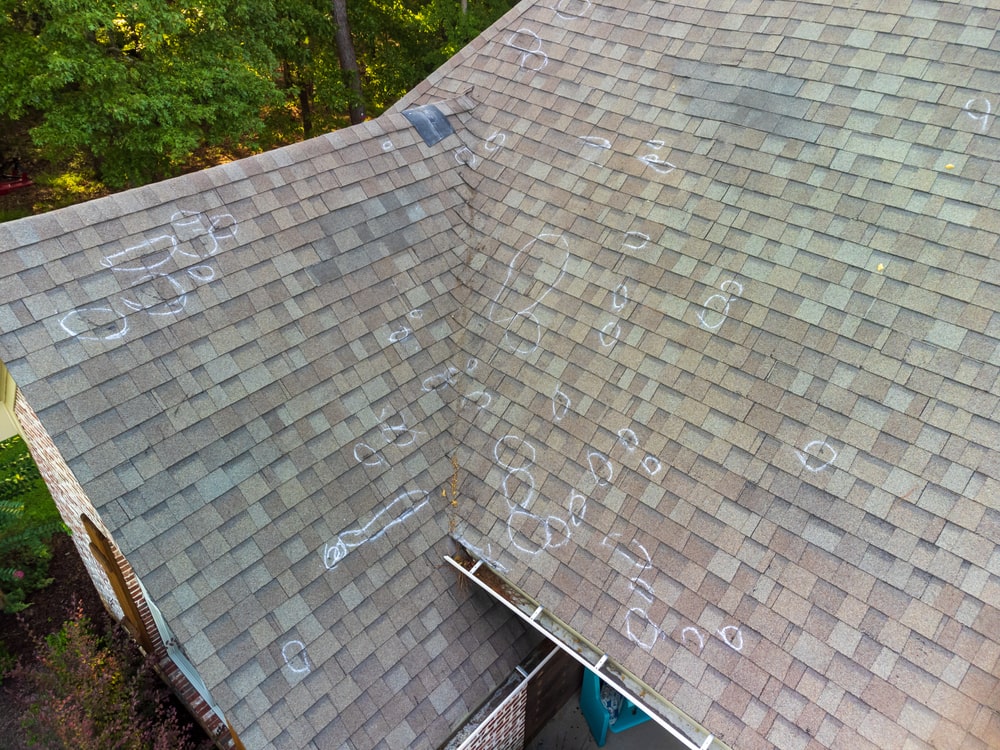
Visible Signs of Damage
Before:
Visible signs of hail damage on your roof can include cracked or missing shingles, dents, and granule loss. Cracked or missing shingles are strong indicators of hail impact and can lead to water penetration if not addressed promptly. Granule loss from shingles, which may appear as dark, soft spots or bruises on the surface, can expose the underlying roofing felt, making the roof more susceptible to further damage, including wind damage.
After:
Visible signs of hail damage on your roof can include:
- Cracked or missing shingles, which are strong indicators of hail impact and can lead to water penetration if not addressed promptly
- Dents
- Granule loss from shingles, which may appear as dark, soft spots or bruises on the surface and can expose the underlying roofing felt, making the roof more susceptible to further damage from hailstones.
Hail storms can also cause dents in metal roofing and gutters, which are immediately visible. These dents not only affect the appearance of your roof but can also compromise its structural integrity. Additionally, inspecting the siding and windows can reveal damage caused by hail besides the roof itself. Addressing these visible signs of damage is necessary to prevent more severe issues in the future.
Ignoring visible signs of hail damage can lead to significant problems, such as leaks and mold growth. Water stains on your ceilings or walls are indicators that your roof has been compromised, and immediate repairs are necessary to prevent further damage. Addressing these signs early helps avoid costly repairs and maintain the overall health of your roof.
Hidden Damage Indicators
While visible damage is easier to spot, hidden damage indicators can be just as critical. Inspecting for water stains in the attic can help reveal leaks caused by hail damage. These leaks may not be immediately apparent but can lead to significant damage, such as water damage, mold growth, and damaging consequences if left untreated.
Hiring a professional for roof inspections can uncover hidden damage that may not be visible to the untrained eye. Professional inspectors possess the experience and tools to identify subtle signs of damage, ensuring all potential issues are addressed. Routine inspections help in identifying both visible and hidden roofing issues caused by weather exposure.
Being aware of hidden indicators of roof damage after a hail storm is crucial, as they can lead to significant issues if left untreated. By conducting regular inspections and addressing both visible and hidden damage, you can ensure the longevity and safety of your roofing structure.
DIY Roof Inspection Tips Post-Hail Storm
Conducting a DIY roof inspection after a hail storm can help identify potential damage before it worsens. Homeowners can perform preliminary inspections by visually assessing the roof from a distance to identify obvious signs of damage. Using binoculars for a closer look while remaining on the ground can help avoid dangerous falls and provide a safer inspection method.
In the following subsections, we will cover safety precautions to take during a DIY roof inspection and what specific signs to look for. These tips will help you conduct a thorough and safe inspection of your roof after a hail storm.
Safety First: Precautions to Take
Safety precautions should be prioritized when inspecting your roof after a hail storm to avoid accidents. Climbing onto the roof can be dangerous, especially if the surface is slippery or unstable. Instead, avoid climbing onto the roof and prioritize safety.
Inspecting the roof from the ground with binoculars is a safer alternative and can help you identify obvious signs of damage without risking a fall. These precautions help protect yourself while still allowing for a thorough inspection of your roof.
What to Look For During DIY Inspection
Before:
When conducting a DIY roof inspection, look for visible dents in metal components and shingle granule loss. Dented gutters and downspouts can indicate hail damage on the roof and should be checked carefully. Additionally, inspect metal components such as roof vents and chimneys for any dents or damage caused by hail.
After:
When conducting a DIY roof inspection, look for:
- Visible dents in metal components
- Shingle granule loss
- Dented gutters and downspouts, which can indicate hail damage on the roof
- Damage on metal components such as roof vents and chimneys
Make sure to check these areas carefully for access.
Checking for signs of damage on air conditioning units can also reveal potential hail impact on the roof. Missing granules on shingles can expose the underlying material to further damage, so it’s essential to identify and address these issues promptly.
A thorough DIY inspection helps identify potential problems early, allowing for necessary actions to protect your roof.
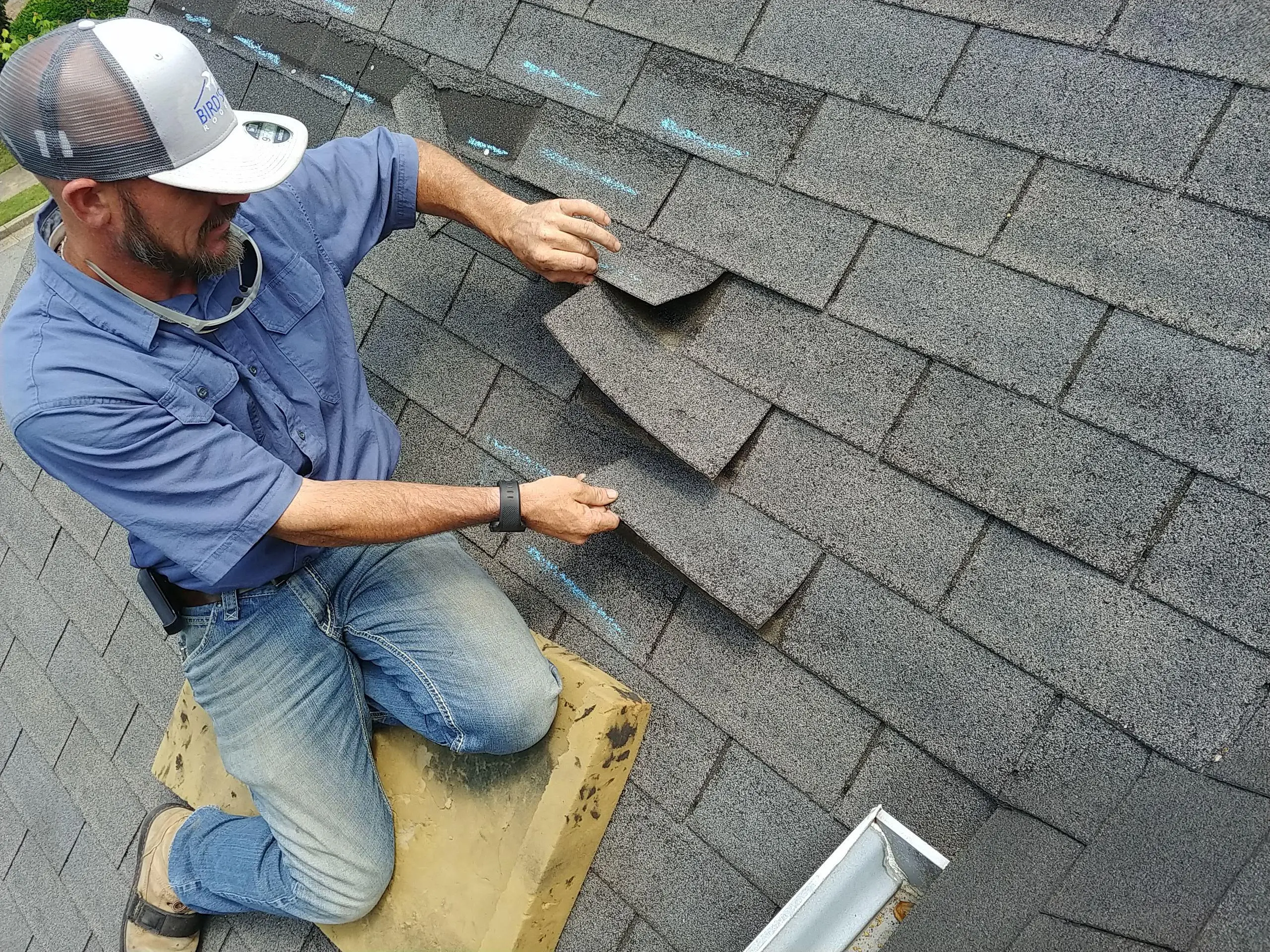
Professional Roof Inspections: When to Call an Expert
While DIY inspections can help identify obvious signs of damage, professional roof inspections are essential for a comprehensive assessment. Professional roofing contractors have the experience and tools to identify damage that may not be visible to untrained observers. Insurance companies generally require a professional assessment before approving claims related to hail damage.
If significant hail damage is found on your roof, it’s crucial to hire a qualified roofing contractor. Working closely with a reputable, experienced local roofing company ensures proper roof inspection and effective repairs.
In the following subsections, we will discuss the benefits of hiring a professional roofing contractor and how to choose the right contractor for your needs.
Benefits of Hiring a Professional Roofing Contractor
Professional roofing contractors have extensive experience and knowledge in assessing roof damage accurately, ensuring that all issues are identified and addressed. They are familiar with the requirements set by insurance companies and can help homeowners navigate the claims process effectively.
Open communication with insurance adjusters can expedite the claims process and ensure a smoother experience for homeowners. Additionally, some roofing contractors offer payment plans or financing options to help homeowners manage the costs of repairs after an inspection.
Choosing the Right Roofing Contractor
When selecting a roofing contractor, consider essential qualities such as experience, reputation, and positive customer reviews. Ensure the contractor is reputable and has specific experience in hail damage repairs. Choosing a reputable roofing contractor is vital for effective repairs after hail damage.
A contractor’s proven experience and reputation in the field are vital for successful hail damage restoration. Selecting the right contractor ensures your roof is repaired correctly and efficiently.
Insurance and Roof Inspections
Roof inspections are essential after hail storms to assess damage and support insurance claims. Detailed inspection reports facilitate insurance claims, helping homeowners secure the necessary funds for repairs.
In the following subsections, we will cover the process of filing an insurance claim for hail damage and how to work effectively with your insurance company to ensure a smooth claims process.
Filing an Insurance Claim for Hail Damage
Clear photographs documenting hail damage can assist with insurance claims. Homeowners should review their coverage details thoroughly to understand what is and isn’t covered. Promptly filing a claim after a hailstorm is advisable to avoid complications.
An expert can streamline the insurance claim process by ensuring all necessary documentation is accurately prepared. This can provide peace of mind and help secure the funds needed for repairs.
Working with Your Insurance Company
When filing a claim, homeowners should provide detailed contact information for their roofing contractor to the insurance company. Effective communication with your insurance company is essential to ensure a smooth claims process.
Maintaining clear and open communication ensures your claim is processed efficiently and necessary repairs are covered.
Preventing Future Hail Damage
Protective measures can enhance roof durability against hail. Upgrading materials can significantly reduce the risk of hail damage to your roof.
Next, we will discuss the importance of regular maintenance and inspections, and the benefits of upgrading to impact-resistant materials.
Regular Maintenance and Inspections
Professional inspections can extend the life of the roof by addressing minor issues before they escalate. Regular maintenance identifies and repairs potential problems before they cause damage. Activities such as inspecting the roof, cleaning gutters and downspouts, and repairing loose or damaged shingles are essential for maintaining a roof in good condition.
A professional inspection can provide a comprehensive report detailing roof conditions, which is valuable for future maintenance planning. Regular maintenance helps keep your roof in top shape, preventing small issues from becoming costly repairs.
Upgrading to Impact-Resistant Materials
Upgrading to impact-resistant materials is a strategic move to minimize potential damage from hail storms. Class 4-rated asphalt shingles are specifically engineered to endure hail strikes and reduce maintenance needs. These durable materials can significantly lower repair costs over time.
Metal roofing is another excellent option for homeowners looking for impact-resistant roofs that stand up against severe weather. Investing in these materials provides long-term protection for your home and peace of mind during storm season.
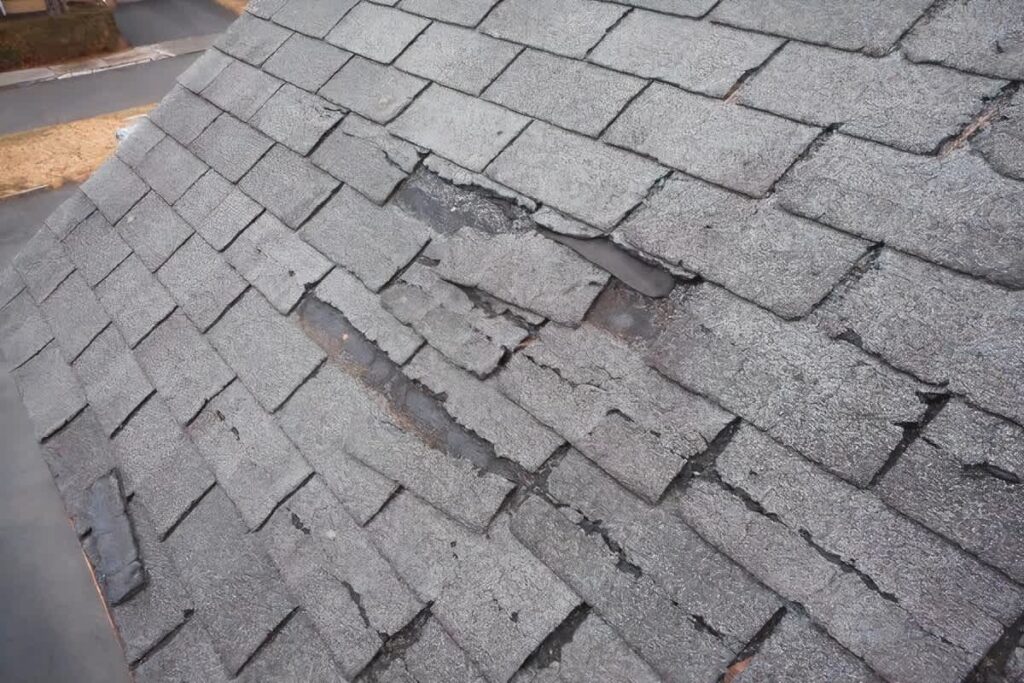
Cost Considerations for Hail Damage Repairs
Repairing hail damage to roofs typically costs around $4,250, with prices ranging from $375 to $7,500 based on damage severity and materials. The expenses associated with repairing hail damage can vary based on factors like the severity of the damage and the type of roofing material.
Next, we will explore the average repair costs by material and the financing options available for roof repairs.
Average Repair Costs by Material
Shingle roofs cost approximately $3–6 per square foot. Metal roofs cost approximately $5–15 per square foot. Commercial single-ply roofs cost approximately $10–20 per square foot. The average repair costs for different roofing materials vary significantly, providing essential guidance for homeowners.
Knowing these costs helps homeowners plan and budget for necessary repairs after a hailstorm.
Financing Options for Roof Repairs
Many financing choices for roof repairs offer long repayment periods and fixed interest rates, making it easier for homeowners to manage costs. Some financing programs do not require a credit check, allowing homeowners with less favorable credit histories to still obtain funding for roof repairs.
PACE financing can cover up to 20% of a home’s value for roofing projects, offering 100% financing with no upfront costs. These various financing options can be reviewed and approved in minutes, offering flexibility and support during the repair process.
Summary
In conclusion, getting your roof inspected after a hail storm is crucial for maintaining the safety and longevity of your home. Identifying both visible and hidden damage can prevent costly repairs and ensure that your roof remains in top condition. Whether you choose to perform a DIY inspection or hire a professional roofing contractor, taking action promptly can save you time, money, and hassle in the long run.
By understanding the importance of regular maintenance, upgrading to impact-resistant materials, and navigating the insurance claim process effectively, you can protect your home from future hail damage. Don’t wait for the next storm to strike – take proactive steps today to secure your roof and your peace of mind.
Frequently Asked Questions
What type of services does Rhino Roofing and General Contracting provide?
Rhino Roofing and General Contracting, LLC provides roofing and exterior restoration services as a full-service general contractor.
Since when has Rhino Roofing been helping people with restoration needs?
Rhino Roofing has been assisting with restoration needs since 2011.
What guarantee does Rhino Roofing offer for their installations?
Rhino Roofing provides a lifetime installation guarantee, ensuring confidence in the quality and durability of their work.
What is one of the specialties of Rhino Roofing?
Rhino Roofing specializes in insurance restoration, helping clients navigate the claims process efficiently. This expertise ensures your roofing needs are addressed with the utmost care and professionalism.
What financing options does Rhino Roofing provide?
Rhino Roofing provides several financing options that can be quickly reviewed and approved, ensuring you have access to the funds you need.
